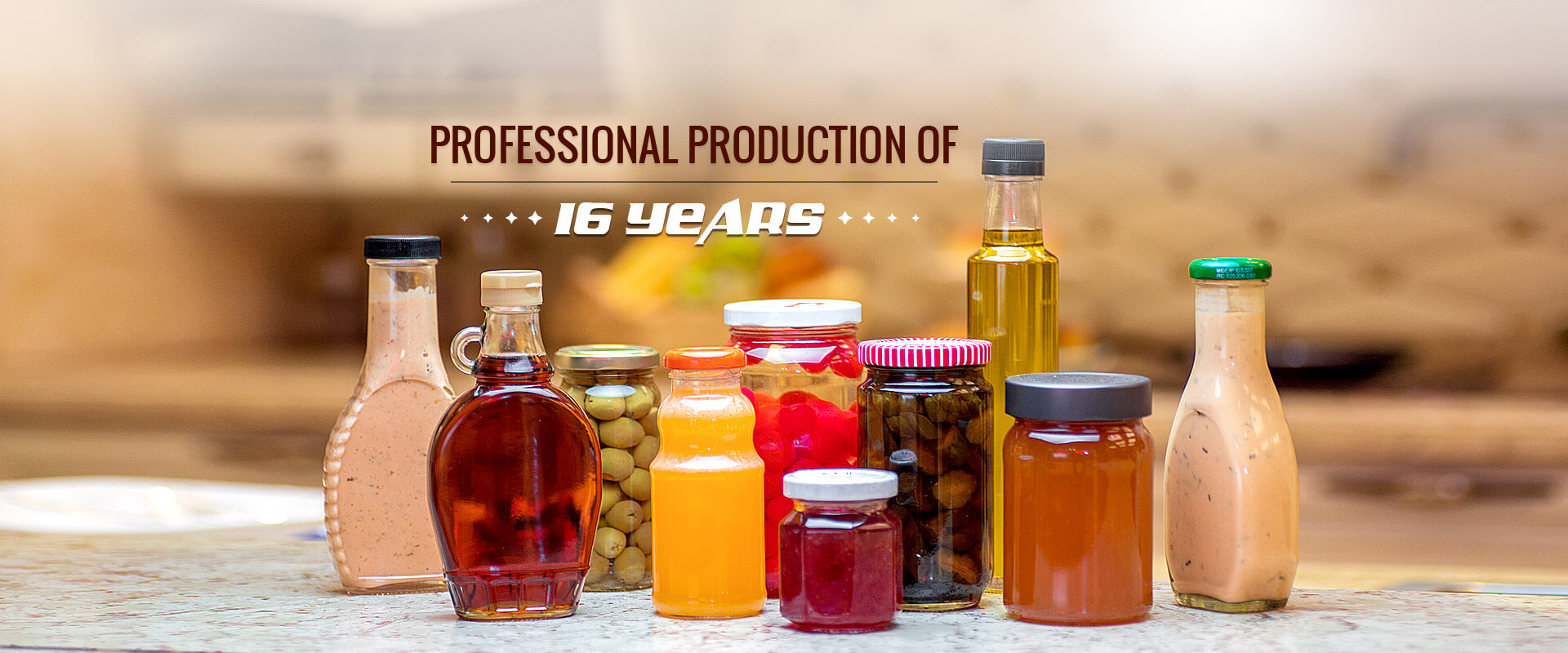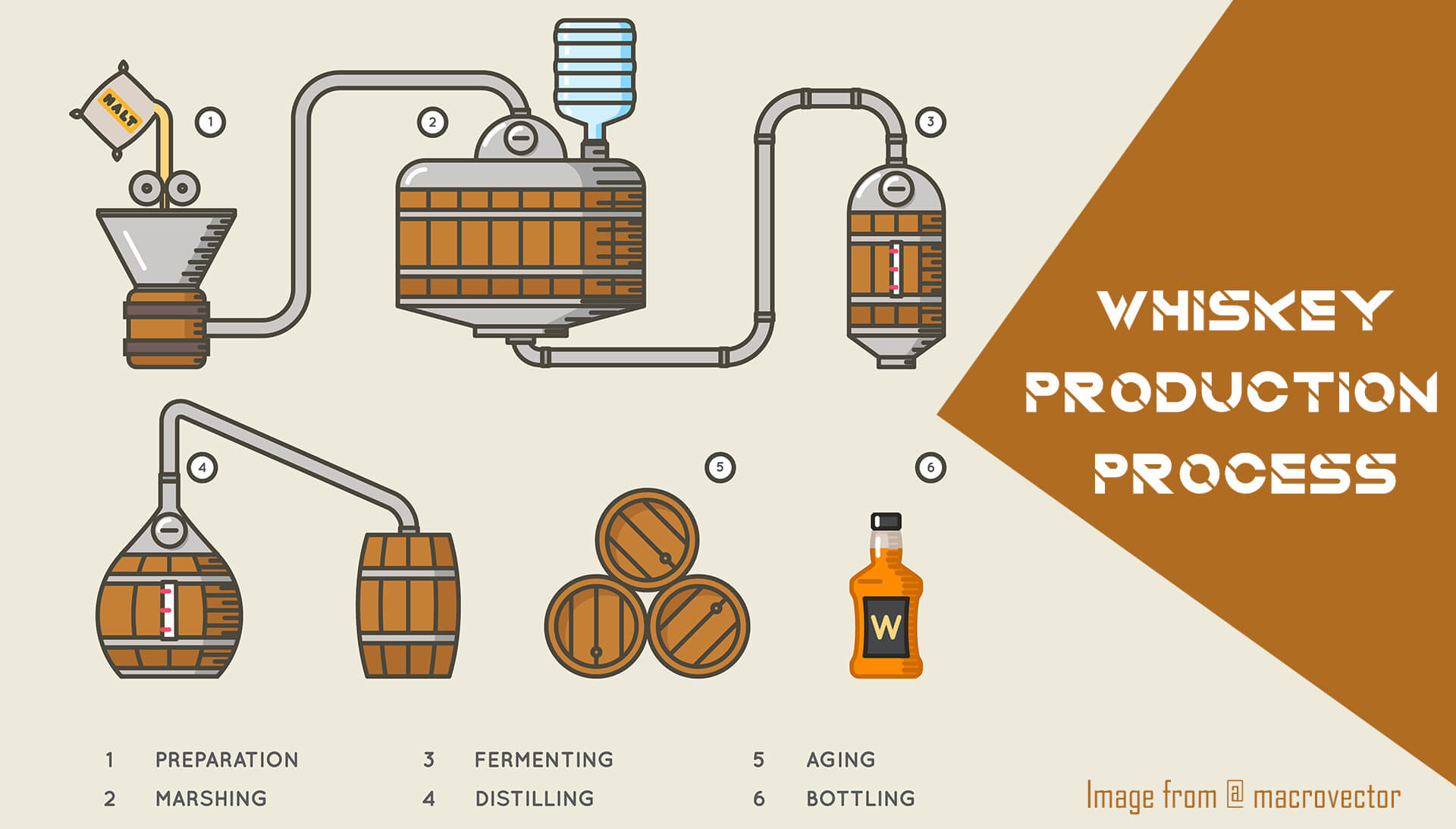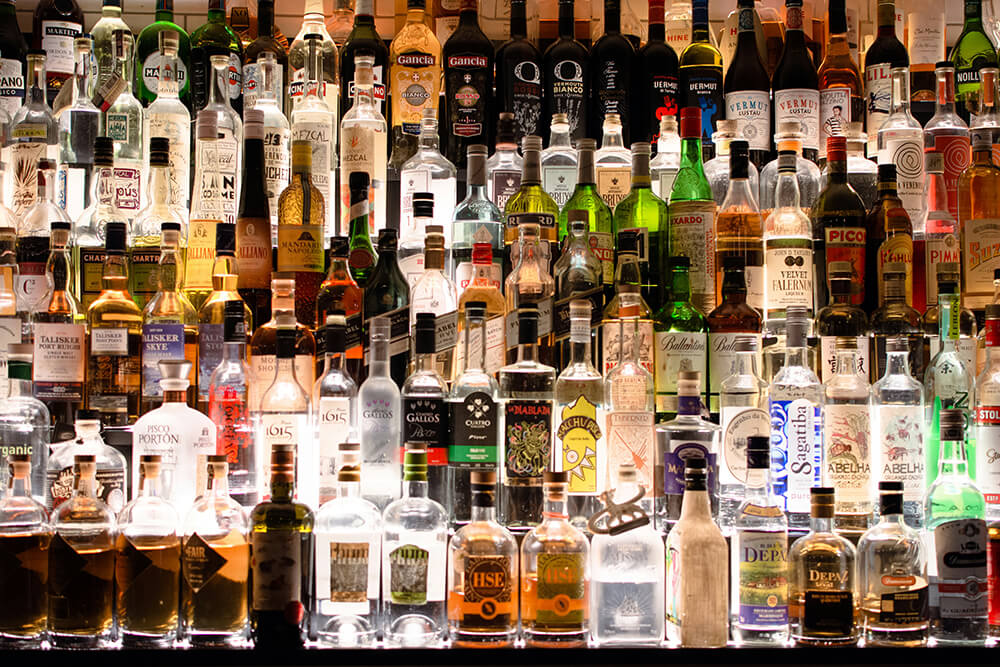
Distilled liquor refers to an alcoholic beverage that has been produced through the process of distillation. Distillation is a method of purifying liquids by heating them to a point where the vapors are produced, and then condensing those vapors back into a liquid. In the context of making alcohol, this process is used to separate the ethanol (alcohol) from the original source material, such as fermented grains, fruit, or potatoes.
During distillation, the liquid is heated in a still, and the vapors that are lighter than the surrounding air rise to the top of the still and are condensed into a new, more concentrated liquid. This concentrated liquid, which contains a higher percentage of ethanol, is then collected and typically aged in barrels to enhance flavor and smoothness.
The purpose of distillation is to increase the alcohol content and purity of the beverage. By removing impurities and concentrating the alcohol, distillation creates a stronger and more refined spirit.
Distilled liquors can be further categorized based on the type of starch or sugar source used in their production, such as:
1. Grape-based: Examples include brandy, cognac, and wine.
2. Grain-based: Examples include whiskey, bourbon, scotch, and rye.
3. Root-based: Example includes rum, which is typically made from sugar cane or molasses.
4. Fruit-based: Examples include fruit brandies like peach brandy or apricot brandy.
Distilled liquors generally have a higher alcohol content (percentage of ethanol) than wines and beers, which are fermented but not distilled. The ABV (Alcohol By Volume) of many distilled liquors typically ranges from 40% to 50%, although some can be higher or lower. The distillation process not only concentrates the alcohol but can also concentrate other flavor compounds present in the source material, leading to the diverse range of flavors and aromas found in different types of distilled spirits. This is the same variety of spirits we later see on the shelves packaged in glass bottles.
The production process of distilled liquor typically involves several steps, which may vary slightly depending on the type of spirit being produced. Here's a general overview of the process:
1. Fermentation: The first step in making distilled liquor is fermentation. This is where a starch or sugar source, such as grains, fruits, or roots, is converted into alcohol by yeast. Yeast consumes the sugars in the source material and produces ethanol (alcohol) and carbon dioxide as byproducts. This process can take several days and is often followed by a secondary fermentation to maximize the yield of alcohol.
2. Preparation: The fermented material, often called "wash," is then separated from the solid materials. In the case of grain-based spirits, this involves mashing the grains with hot water to release their sugars and then straining the liquid to remove the spent grains. For fruit-based spirits, the fruit is often crushed or macerated to extract the juices and sugars.
3. Boiling: The liquid is then boiled to concentrate the alcohol and remove impurities. This step is known as "rectification" and can involve multiple distillation passes to further purify the alcohol.
4. Distillation: The concentrated liquid is transferred to a distillation pot, where it is heated. As the liquid reaches its boiling point, the vapors rise up through a condensation tube where they are cooled and condensed back into a liquid. This liquid, which contains a higher percentage of alcohol than the original fermented material, is collected as the distillate.
5. Aging: Many distilled liquors are aged in wooden barrels to develop flavor and smoothness. The barrels, which may have previously held another type of spirit or wine, contribute color, aroma, and taste to the liquor. The length of time the spirit is aged can vary greatly, from a few months to several years, depending on the type of spirit and the desired flavor profile.
6. Maturation: During the aging process, the distilled liquor undergoes maturation, where it interacts with the wood of the barrel, the air, and sometimes other spirits that might be added, such as caramel or other flavorings.
7. Filtering and Blending: Before bottling, the distilled liquor may be filtered to remove any remaining impurities and blended with other batches to achieve a consistent taste and quality.
8. Bottling: The final step is bottling the distilled liquor. It is typically bottled at a specific alcohol by volume (ABV) percentage, which can vary depending on the type of spirit. The liquor bottles are then sealed and often labeled with information about the spirit, its ABV, and any other relevant details, such as the age or batch number.

Here is an introduction to various types of distilled liquors from around the world:
1. Whiskey: Whiskey, also spelled whisky, is a distilled alcoholic beverage made from fermented grain mash. It is typically aged in wooden casks, which gives it distinct flavors and characteristics. Different regions produce their own styles of whiskey, such as Scotch whisky from Scotland, Irish whiskey from Ireland, bourbon from the United States, and Canadian whisky from Canada.
2. Vodka: Vodka is a neutral and colorless distilled spirit that is traditionally made from fermented grains or potatoes. It is known for its high alcohol content and versatility in cocktails. Vodka originated in Eastern Europe and is now produced in various countries worldwide, including Russia, Poland, Sweden, and the United States.
3. Rum: Rum is a distilled alcoholic beverage made from sugarcane byproducts, such as molasses or sugarcane juice. It is typically associated with tropical regions and is produced in countries like the Caribbean, Latin America, and some parts of Asia. Rum comes in various styles, including white rum, dark rum, spiced rum, and aged rum, each offering distinct flavors and characteristics.
4. Gin: Gin is a spirit that derives its predominant flavor from juniper berries. It is produced by distilling fermented grain mash and then infusing it with botanicals, including herbs, spices, and fruits. Gin originated in the Netherlands and has become popular worldwide. Classic styles include London Dry Gin, Old Tom Gin, and Genever.
5. Tequila: Tequila is a distilled spirit made from the blue agave plant, primarily grown in Mexico. It has a distinctive flavor profile and is known for its association with margaritas and other cocktails. Tequila can be categorized into different types based on the aging process, such as blanco (unaged), reposado (aged up to a year), and añejo (aged for at least one year).
6. Brandy: Brandy is a spirit produced by distilling wine or fermented fruit juice. It is typically aged in wooden barrels, which contributes to its unique flavors and complexity. Brandy is produced in various regions worldwide, including Cognac and Armagnac from France, and pisco from Peru and Chile.
7. Cognac: Cognac is a specific type of brandy that is produced in the Cognac region of France. It is made from specific grape varieties and must follow strict production regulations. Cognac is known for its elegant and nuanced flavors, often associated with luxury and sophistication.
8. Mezcal: Mezcal is a distilled spirit made from the agave plant, primarily found in Mexico. It is similar to tequila but has a smokier flavor profile due to traditional production methods that involve roasting the agave hearts in underground pits. Mezcal is gaining popularity globally as a unique and artisanal spirit.
9. Absinthe: Absinthe is a highly alcoholic spirit that is flavored with botanicals, including wormwood. It is known for its green color and strong herbal flavors. Absinthe originated in Switzerland and became popular in the late 19th and early 20th centuries in France. It has a reputation for its association with the "Green Fairy" and its alleged hallucinogenic properties.
10. Baijiu: Baijiu is a Chinese distilled spirit that is typically made from fermented sorghum, although other grains such as rice, wheat, or corn can be used. Baijiu is known for its strong and distinctive flavor, and it is often consumed during banquets and celebrations in China. It is considered one of the most consumed spirits globally.
11. Pisco: Pisco is a grape brandy produced in Peru and Chile. It is made from specific grape varieties and has a distinctive flavor profile. Pisco is often used in cocktails such as the Pisco Sour.
12. Grappa: Grappa is an Italian spirit made from the pomace, the leftover grape skins, seeds, and stems from winemaking. It is typically clear and has a strong and aromatic flavor. Grappa is often enjoyed as a digestif.
13. Soju: Soju is a popular distilled spirit in Korea. It is traditionally made from rice, but modern variations can be made from other grains such as wheat, barley, or potatoes. Soju has a clean and crisp taste and is often consumed alongside Korean meals.
14. Aquavit: Aquavit is a Scandinavian spirit that is flavored with herbs and spices such as caraway, dill, and fennel. It is typically enjoyed as a digestif and is often associated with Nordic cuisine and traditions.
15. Ouzo: Ouzo is an anise-flavored spirit that is popular in Greece and Cyprus. It is made from distilled grapes or grain, and its distinct flavor is reminiscent of black licorice. Ouzo is often diluted with water and enjoyed as an aperitif.
16. Rakia: Rakia is a fruit brandy that is widely consumed in Southeastern Europe and the Balkans. It is made from various fruits, including plums, apricots, grapes, and more. Rakia is known for its potent alcohol content and is often enjoyed on special occasions.
17. Shochu: Shochu is a Japanese distilled spirit that can be made from various ingredients, including barley, rice, sweet potatoes, and buckwheat. It has a lower alcohol content compared to other spirits like sake and is often served on the rocks or mixed into cocktails.
18. Calvados: Calvados is an apple brandy that originates from the Normandy region in France. It is made from fermented apple cider and is typically aged in oak barrels. Calvados has a rich and fruity flavor, often with hints of apple and spice.
19. Slivovitz: Slivovitz is a plum brandy that is popular in Central and Eastern European countries, particularly Serbia, Croatia, and Hungary. It is made from fermented plums and has a strong and fruity flavor. Slivovitz is often consumed as a traditional spirit during celebrations and social gatherings.
20. Cachaça: Cachaça is a Brazilian spirit made from fermented sugarcane juice. It is a key ingredient in the popular cocktail caipirinha and has a slightly sweet and fruity flavor. Cachaça can be aged or unaged, with aged versions offering more complex flavors.
21. Arrack: Arrack is a distilled spirit commonly found in South Asia and Southeast Asia. It is traditionally made from fermented sap of coconut flowers or sugarcane, and sometimes includes other ingredients such as rice or fruit. Arrack has a distinctive flavor and is often enjoyed neat or used in cocktails.
22. Poitín: Poitín, also known as poteen, is an Irish spirit with a long history. It is made from fermented grains, potatoes, or malted barley and has a high alcohol content. Poitín was traditionally produced illegally in small pot stills and is now legally available in Ireland.
23. Aguardiente: Aguardiente, meaning "firewater" in Spanish, is a term used in Latin America to refer to various types of distilled spirits. It is typically made from sugarcane, grapes, or other fruits and has a high alcohol content. Aguardiente is popular in countries such as Colombia, Ecuador, and Mexico.
24. Sotol: Sotol is a distilled spirit that comes from the northern regions of Mexico. It is made from the Desert Spoon plant, also known as sotol, and has a flavor profile similar to agave spirits like tequila and mezcal. Sotol has gained recognition as a unique Mexican spirit in recent years.
25. Horilka: Horilka is a traditional Ukrainian distilled spirit that is similar to vodka. It is made from fermented grains, such as wheat, rye, or barley, and has a clear and neutral flavor. Horilka is often enjoyed neat or used as a base for flavored infusions.
26. Arak: Arak is a Middle Eastern distilled spirit that is popular in countries like Lebanon, Syria, and Israel. It is made from fermented grapes or dates and flavored with anise. Arak is typically diluted with water before being consumed.
27. Singani: Singani is a Bolivian distilled spirit made from Muscat of Alexandria grapes. It is similar to brandy but has a unique flavor profile. Singani is often used as a base for cocktails and is considered the national spirit of Bolivia.
28. Oghi: Oghi, also known as oghee or ogi, is a traditional fruit brandy widely consumed in Armenia and other countries in the region. It is made from various fruits, including grapes, apricots, or mulberries. Oghi is often enjoyed during social gatherings and celebrations.
29. Palinka: Palinka is a fruit brandy that is popular in Hungary and other Central European countries. It is made from various fruits, such as plums, apricots, cherries, or apples. Palinka is known for its strong and fruity flavors and is often enjoyed as a digestive after meals.
30. Tuzemák: Tuzemák is a Czech distilled spirit made from potatoes or grain. It is similar to vodka but has a slightly sweeter taste. Tuzemák is often consumed straight, mixed into cocktails, or used as a base for traditional Czech herbal liqueurs.
31. Slivovica: Slivovica, also known as šljivovica, is a fruit brandy made from plums and is popular in the Balkans, particularly in Serbia, Croatia, and Bosnia and Herzegovina. It has a strong and fruity flavor and is often enjoyed in social settings.
32. Raki: Raki is a traditional Turkish distilled spirit that is similar to ouzo and arak. It is made from fermented grapes or other fruits and flavored with anise. Raki is often enjoyed as an aperitif or accompanied by meze, a selection of small dishes.
33. Armagnac: Armagnac is another French brandy produced in the Armagnac region of Gascony. It is made from specific grape varieties and is known for its rich and complex flavors. Armagnac is often aged in oak barrels, which adds depth to its taste.
34. Slivovice: Slivovice is a Czech and Slovak spirit made from fermented plums. It is similar to Slivovitz but typically has a higher alcohol content. Slivovice is often homemade and enjoyed as a traditional spirit in the Czech Republic and Slovakia.
35. Raicilla: Raicilla is a traditional Mexican spirit that is produced in the states of Jalisco and Nayarit. It is made from the agave plant, similar to tequila and mezcal, but the production methods and agave varieties used in raicilla differ. It has a distinct flavor and is gaining recognition as a unique Mexican spirit.
36. Singa: Singa, also known as Singani, is a traditional distilled spirit from Bhutan. It is made from fermented grains, such as millet or rice, and has a clear and potent flavor. Singa is commonly consumed during festivals and special occasions in Bhutanese culture.
37. Moonshine: Moonshine refers to illegally produced distilled spirits, often associated with homemade production in small quantities. It is prevalent in many regions around the world, including the United States, where it historically gained popularity during the Prohibition era. Moonshine can be made from various ingredients, such as corn, sugar, or fruit. We have a moonshine spirits bottle that packages moonshine!
38. Damassine: Damassine is a fruit brandy made from damson plums. It is primarily produced in the Jura region of France and has a fruity and slightly tart flavor. Damassine is often enjoyed as a digestif and is a specialty of the Jura region.
39. Schnapps: Schnapps is a term used to describe a broad range of fruit brandies, particularly in German-speaking countries. It can be made from various fruits, including apples, pears, cherries, or plums. Schnapps has a sweet and fruity taste and is often enjoyed as a shot or used in cocktails.
40. Orujo: Orujo is a Spanish pomace brandy that is produced mainly in the regions of Galicia and Asturias. It is made from the leftover grape skins, seeds, and stems from winemaking. Orujo can be clear or aged, and it is known for its strong and distinctive flavor.

HUIHE is one of the leading suppliers of spirits glass bottles in China, dedicated to providing quality and innovative packaging solutions for the global spirits industry. With nearly 20 years of glass manufacturing experience and a reputation for excellence, we have become a reliable choice for various scale spirits companies and distilleries.
Our spirits glass bottles are designed to showcase the personality of your distilled spirits, help enhance the quality and appeal of your spirits, and increase the competitiveness of your spirits in the marketplace. We offer a wide range of spirits bottle styles, sizes and capacities to meet the specific needs of spirits companies, as well as custom design services such as deep-finish decorations on the surface of the glass bottles and stopper and cap accessories, and, of course, alcohol box cartons, to create truly unique, eye-catching spirits bottles for spirits brands.
In addition to our high-quality spirits bottles, we pride ourselves on exceptional customer service and reliability. Our team of experienced professionals is ready to help you with any questions or concerns you may have, including a dozen or so on our quality control team, and with automated machine testing, our spirits bottles do all of our products 100% tested. We also endeavor to provide timely and efficient delivery services to ensure the smooth running of your business operations.
We believe that our products and services are second to none in China and we are confident that we can help your business succeed. If you are choosing a supplier of spirits bottles in China, look no further than HUIHE PACKAGING.
Contact us for free samples and our success stories in various countries!
